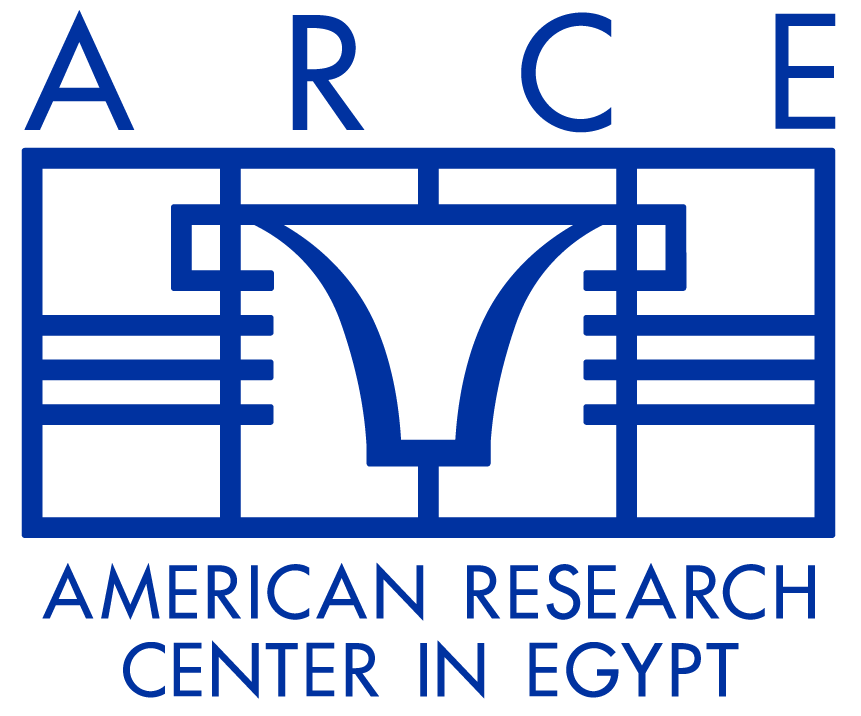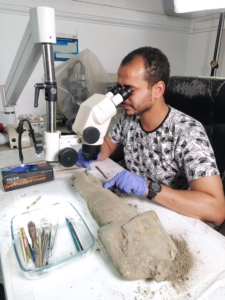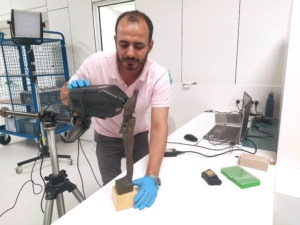
21
FebCairo Lecture: Bronze Osirises: A Look at a Large Production of Polychromed and Inlaid Statues of the First Millennium BC
Presented by: Eid Mertah; Conservator at the Egyptian Museum, Cairo, and a PhD candidate at Cairo University
- 6:00 PM Cairo Time
- ARCE Cairo Center2 Midan Simon Bolivar Garden City Cairo Governorate 11461 Egypt
- + Add to Calendar
- Doors Open at 5:30 PM Cairo Time
- Doors Close at 6:00 PM
Lecture Information
 Bronze statues depicting Osiris abound in Egyptian collections around the world. Their dating is often very vague (generally “Late Period” – a dating which is not only approximate, but also often erroneous). One of Eid’s aims is to propose ways of refining such dating. Some of these bronze statues seem to have been the main focus of cultic practices, while others may have been sorts of ex-votos displayed within a liturgical assemblage that served the cultic needs of a temple. Archaeometric analyses permit to characterize the manufacturing techniques, the nature and composition of the alloys, inlays and gold applications as well as to form groups. This, together with a study of contexts and stylistic comparisons, provide keys to trace the evolution of this category of objects, propose a provenance for undocumented pieces, and even detect ateliers of fabrication. One of the main aims of Eid’s study is understanding the “life” of the objects while enabling their preservation.
Bronze statues depicting Osiris abound in Egyptian collections around the world. Their dating is often very vague (generally “Late Period” – a dating which is not only approximate, but also often erroneous). One of Eid’s aims is to propose ways of refining such dating. Some of these bronze statues seem to have been the main focus of cultic practices, while others may have been sorts of ex-votos displayed within a liturgical assemblage that served the cultic needs of a temple. Archaeometric analyses permit to characterize the manufacturing techniques, the nature and composition of the alloys, inlays and gold applications as well as to form groups. This, together with a study of contexts and stylistic comparisons, provide keys to trace the evolution of this category of objects, propose a provenance for undocumented pieces, and even detect ateliers of fabrication. One of the main aims of Eid’s study is understanding the “life” of the objects while enabling their preservation.
This lecture will thus present some results of the study on gilded and inlaid bronze statues from the First Millennium BC, depicting the god Osiris — the most frequently depicted deity of that period. This project of study started at the Egyptian Museum, Cairo, where Eid is working as a conservator. It also extended through other international institutions such as: the Louvre, the Bibliothèque Nationale de France, and the Ägyptisches Museum in Berlin.
Speaker Bio
 Eid Mertah is a conservator at the Egyptian Museum, Cairo, and a PhD candidate at Cairo University. For his dissertation, he studies the bronze statues depicting the god Osiris, produced throughout the First Millennium BC. He has also been trained at the Römische-Germanisches Museum in Mainz, and at Ca’ Foscari University in Venice. Throughout his career, he has worked on several archaeological sites, such as Mit Rahina, Matariya, Amarna, and the Theban Necropolis. In 2023 he was PhD fellow at the Institut français d’archéologie orientale (IFAO), and is currently a PhD fellow at ARCE.
Eid Mertah is a conservator at the Egyptian Museum, Cairo, and a PhD candidate at Cairo University. For his dissertation, he studies the bronze statues depicting the god Osiris, produced throughout the First Millennium BC. He has also been trained at the Römische-Germanisches Museum in Mainz, and at Ca’ Foscari University in Venice. Throughout his career, he has worked on several archaeological sites, such as Mit Rahina, Matariya, Amarna, and the Theban Necropolis. In 2023 he was PhD fellow at the Institut français d’archéologie orientale (IFAO), and is currently a PhD fellow at ARCE.